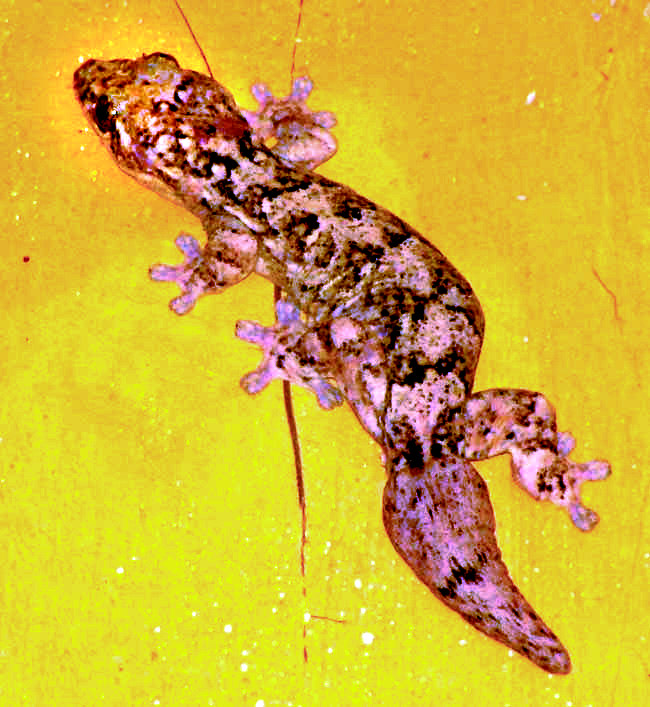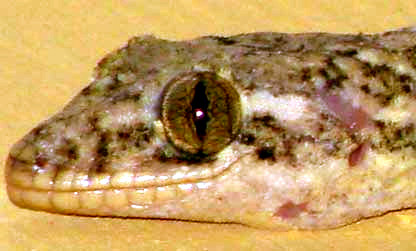Excerpts from Jim Conrad's
Naturalist Newsletter

from the November 15, 2009 Newsletter issued from Hacienda Chichen Resort beside Chichén Itzá Ruins, central Yucatán, MÉXICO; limestone bedrock, elevation ~39m (~128ft), ~N18.52°, ~W95.15°
TURNIP-TAILED GECKO
 The first morning I awoke in my new room and flipped on the lights, sticking to the wall not six feet away were two three-inch long (7.5 cm) critters, one shown above.
The first morning I awoke in my new room and flipped on the lights, sticking to the wall not six feet away were two three-inch long (7.5 cm) critters, one shown above.
That's a Turnip-tailed Gecko, THECADACTYLUS RAPICAUDUS, distributed from the Yucatan south to South America. Common House Geckos so abundantly found and heard in many if not most Mexican homes outside the big cities are invasive species but Turnip-tails are native, and much more seldom seen. My Maya friends here say that they're fairly common in buildings around here. Usually they're found under logs and rocks in humid forests where they've been documented feeding on crickets, termites, spiders and scorpions.
You can see what's behind the "Turnip-tailed" in their name. In a side view you can get another look at how the tail swells behind the constriction point in the picture at the right.
The constriction point is where the tail breaks off if a predator attacks the wrong end -- or, in certain species, even if the gecko only gets upset. The local Spanish name for Turnip-tails is "Tiracola," which more or less means "Tail-leaver," and I was told that the tail is poisonous, which of course it isn't.
A close-up of the Turnip-tail's "smiling face" is shown below.
You can see some fresh wounds in the skin so this individual must have been in a fight lately.
